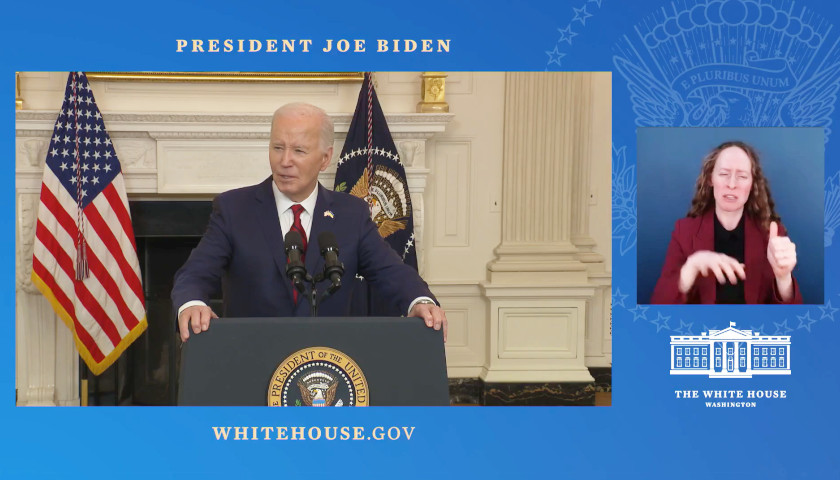In November 2018, the Sylvania School District placed a property tax levy on the ballot. Information shared in the media and other advertisements said the 0.9 mill levy would cost the owner of a $100,000 home about $2.63 per month.
But the ballot language read:
“An additional tax for the benefit of Sylvania City School District for the purpose of providing for school safety and security at a rate not exceeding 0.9 mill for each one dollar of valuation, which amounts to $0.09 for each one hundred dollars of valuation, for five years, commencing in 2018, first due in calendar year 2019.”
The levy failed, but not before State Rep. Derek Merrin (R-47) noticed a disconnect between the advertised costs and the actual ballot language.
“The current ballot language, at best, is useless and, at worst, is misleading voters,” he said. “The information being conveyed is useless.”
So he introduced House Bill 76 to update the requirements for ballot language on property tax levies.
The first thing the bill would do, he explained, is require that all election notices and ballot language tell the estimated amount the levy would collect each year.
“How much does 2.9 mills raise in Stark County?” he asked. “A 1-mill levy in Franklin County is completely different from 1 mill in Stark County. When voters see 1 mill they really don’t know what that means. So if you see 1 mill for parks, is that going to raise $100,000 for parks – or $1 million?”
Merrin said the current situation is like a consumer at a car dealership being forced to buy a car without knowing how much the car is. “So how are voters supposed to vote without being told how much the levy is going to raise – how much is the tax?”
In Ohio, bond levies include the total amount of money being borrowed. Certain emergency levies give the total amount to be raised to address the emergency. But other property tax levies, like for Sylvania Schools, just give the millage per $100 of valuation.
Most people don’t take the time to realize the lack of uniformity in the levy language, Merrin said. “According to the Legislative Service Commission, they believe ballot language hasn’t been updated since the 1930s,” he added. “So that brings us to the next problem, which is where this bill originated.”
Property tax levies are expressed in mills for each dollar of valuation, so a 0.9 mill levy would charge the property owner $0.09 for every $100 of valuation. In Ohio, the valuation is 35 percent of the appraised value of the home. Taxes are only applied to the valuation – not the appraised value.
Merrin says the $100 of valuation probably made sense in the 1930s.
“But today, homes are not in the $100 range, so why would you be expressing the value in $100 increments,” he asked. “Levies are almost always talked about in terms of $100,000.”
His bill would change the ballot language to express the property tax levy’s rate in dollars for each $100,000 of fair market value instead of in dollars for each $100 of taxable value.
This brought opposition from the Ohio Association of School Business Officials, the Buckeye Association of School Administrators, the Ohio School Boards Association, the Ohio Library Council, the Ohio Municipal League, and the Ohio Township Association.
In prepared testimony the groups submitted, they said:
“The transition to the use of “$100,000” in value for tax purposes presents opportunities for the miscalculation of the taxes for an individual property, particularly when using the proposed term “fair market value”. This term may mean different things to different people, but we believe the average homeowner believes it to mean the possible sale value of their home. This value may not actually be the taxable value for purposes of calculating the taxes property owners will pay.”
The Ohio Association of County Boards of Developmental Disabilities said the term “fair market value” is “confusing.”
“Most property owners would likely consider this to mean the amount a property would fetch in an arm’s length sale,” the association said. “However, it is the county auditor who assesses the market value of each property using a variety of factors, which may result in a considerably different sum than that what that property might bring if placed on the market. While this distinction does not affect the process used to calculate property taxes, the confusion that could result in the minds of voters after reading levy language structured in this way runs counter to the stated intention of transparency.”
Merrin acknowledged the opposition, but pointed out that the members of all the associations already do what the bill states. “They advertise their levies and include the cost for an average home valued at $100,000,” he said.
“The taxable value is a misnomer,” he explained, “because everything is based upon the market value. No one knows the taxable value of their home, but they do know the market value. And the taxable value is based on the market value.”
Despite the claims during the hearing, Merrin said, “The real reason they oppose it is because they believe the taxpayers will have a better understanding of how much levies will cost and they don’t want that because they think their levies won’t pass.”
Merrin thinks the clearer language could help the levies on the ballot. “It will help people better understand the levy,” he said. “And when people get confused their natural reaction is to say no.”
The third change the bill mandates is uniformity in the appearance of the ballot. Under current law, certain portions of a school property tax are required to be in bold lettering and in a larger font size. But all ballots are required to be uniform. The bill says no words will be in bold and all text sizes will be the same, except for the title of the levy.
H.B. 76 is ready to be voted on by the House. Merrin expects that to happen fairly quickly after their return from the summer break. It will then go to the Senate for consideration. He said his goal is that the new language would be in effect for any property tax levy on the November 2020 ballot.
– – –
Maggie Leigh Thurber is a writer for The Ohio Star. Email tips to [email protected].
Photo “Derek Merrin” by Derek Merrin.





